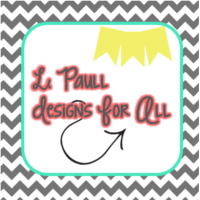So…. I've been reading a lot of negative press about being 'Basic' lately and I'm like….that is so me and I don't care one little bit….in fact more than that…. I'm proud to be a 'Basic B*tch'
I adore Clueless and SATC, I use words like 'Totes' and count down the days until a PSL is back on the Starbucks menu and you can bet I'll be Instagramming a picture of it!

I'm not doing any of these things to be anything other than me and I feel that if I didn't do them then I'd be trying to be one of those cool, nonchalant, espresso drinkers who write the memes and blogs about 'Basic B*tches' and that would just be totes fake!
But this got me thinking… is there such a thing as a 'Basic' teacher and am I one?
The answer to both of these questions is YES and YES!!!!
Keep reading to see if you're a 'Basic' teacher and if you are- BE PROUD!!!
1
You post a picture of your latest classroom bulletin board and are secretly excited every time someone likes it- it kind of reaffirms the reason you got into teaching in the first place….to make things pretty! Duh!
2
You have a love affair with all things Erin Condren and obsess over which cover to get. Add 'Basic' points if you post a pic of the box once its arrived!
3
You fill your wish list with about 1000 amazing products in anticipation of the next great TpT sale only to have to sit the night before excruciatingly taking things out of it because you know spending THAT much money would just be ludicrous…wouldn't it?
4
You have stars in your eyes for the likes of Mr Greg (The Kindergarten Smorgasboard), Aly (Just a Primary Girl) and Meg (A New Box of Crayons) and your little butterflies do a leap every time you see one of them in your 'Scope or 'liking' a tweet of yours. I mean….they are the Ryan Gosling, Jennifer Lawrence and Cameron Diaz (only mucho cooler) of the teaching world right?!
5
You have commented that Pinterest/Periscope/ Blab/IG is the best thing to ever occur in the world of teachers- they should totally earn you CPD credits or something right…I mean, the hours we put into them!!!!
6
You turn your nose up at Comic Sans (but in a nice way of course) and can name a KG font from 50 yards!
If you could say YES to at least 3 of these then welcome to the wonderful world of the 'Basic' teacher!
5 or 6…. we need to Blab right now- let's be blogging besties and totally have each other's backs- you are my kindred spirit!
No offence is meant with this post- I can say a huge HELL YEAH to EVERY.SINGLE.ONE of the above statements and I am totes serious about the whole blogging bestie thing- email me year2tastic@gmail.com
I'm a #basicteacher and PROUD!
(All pictures used are my own year2tastic IG ones!)
































